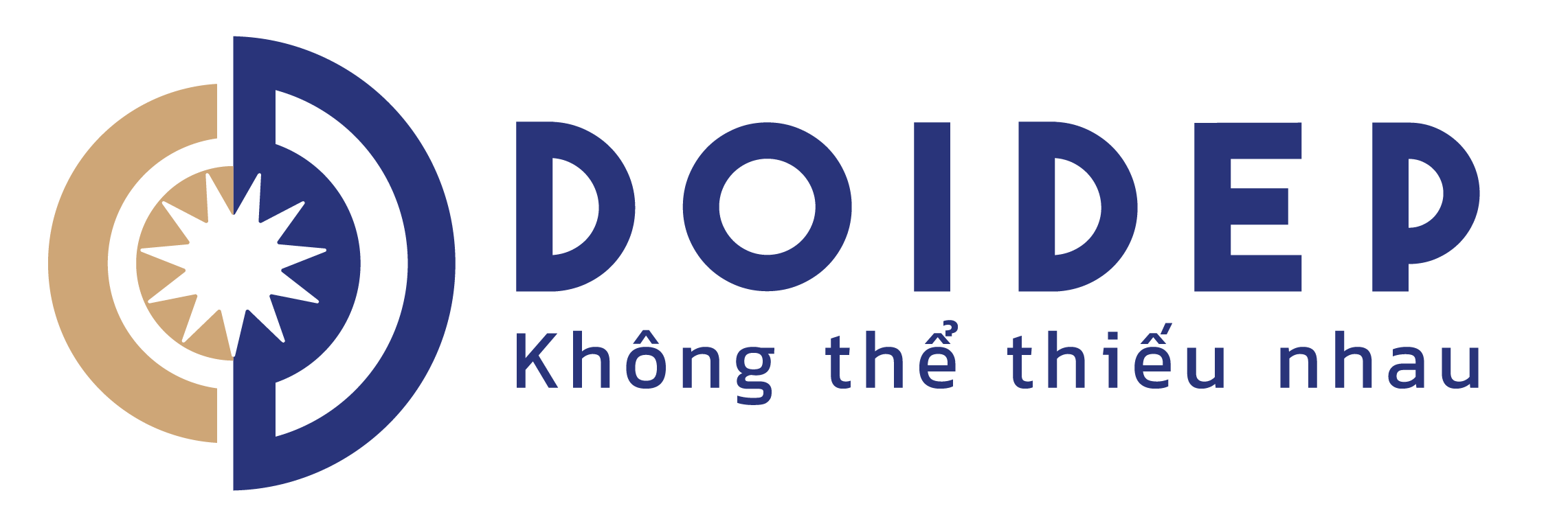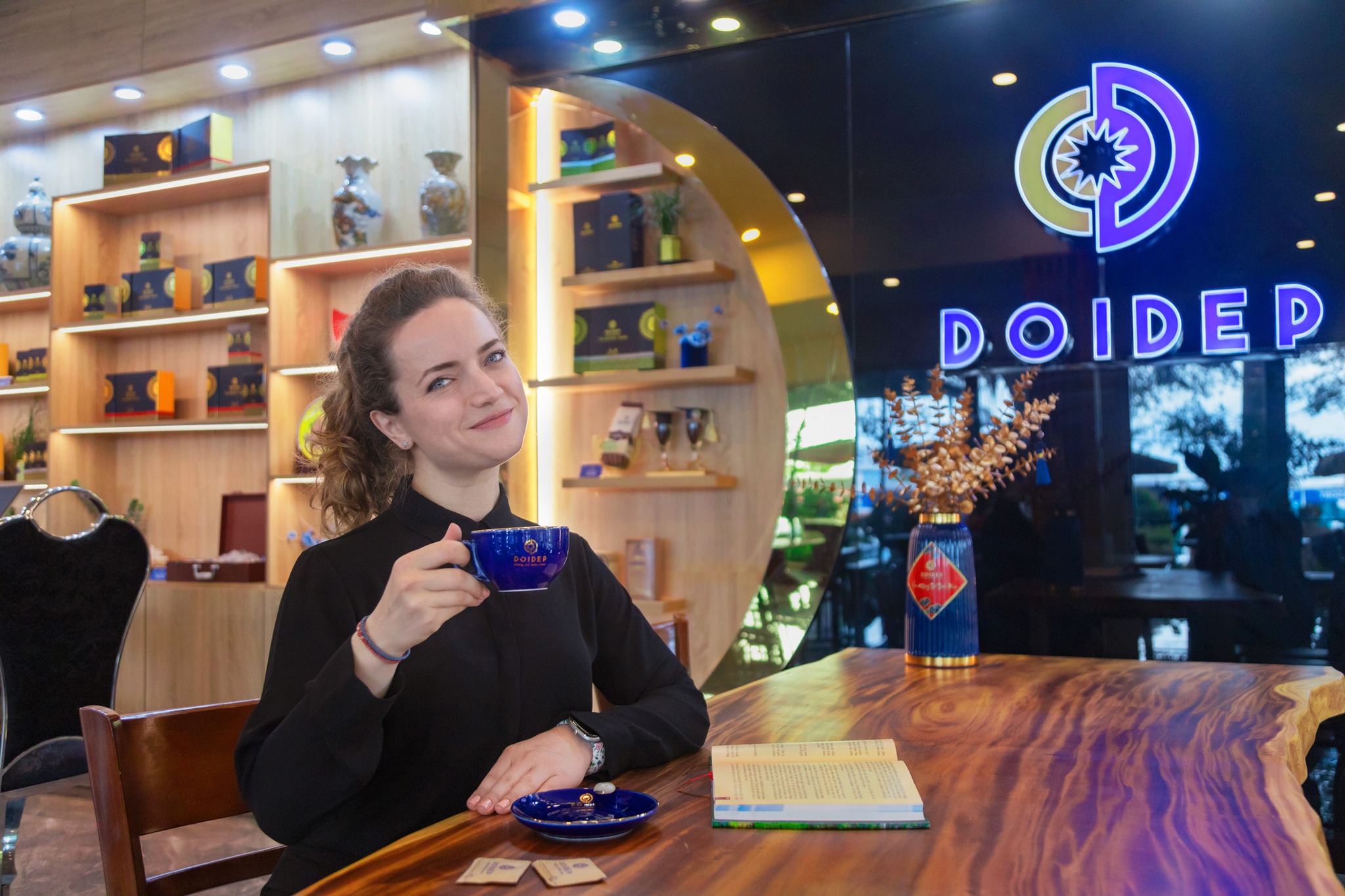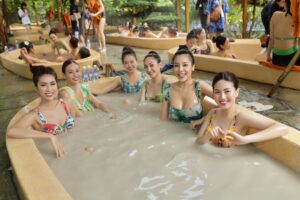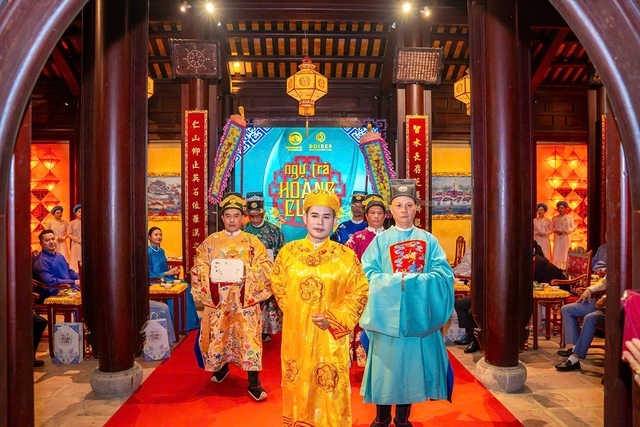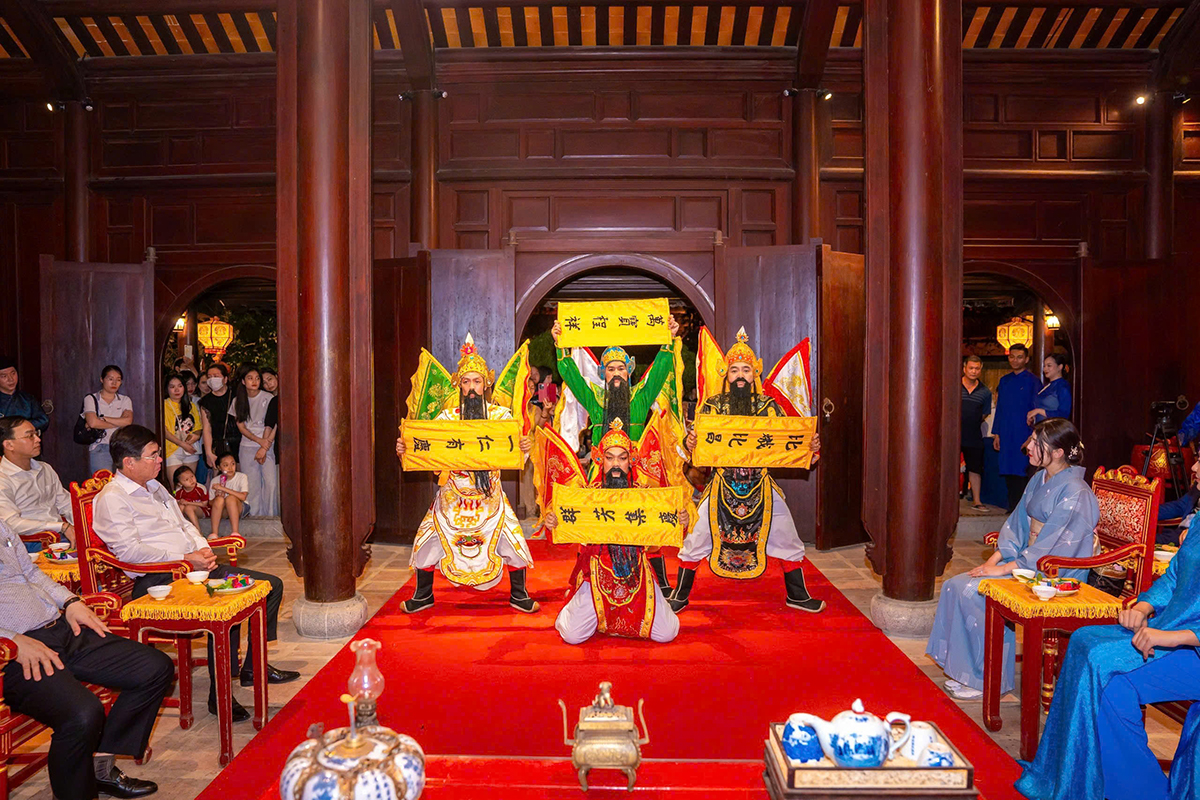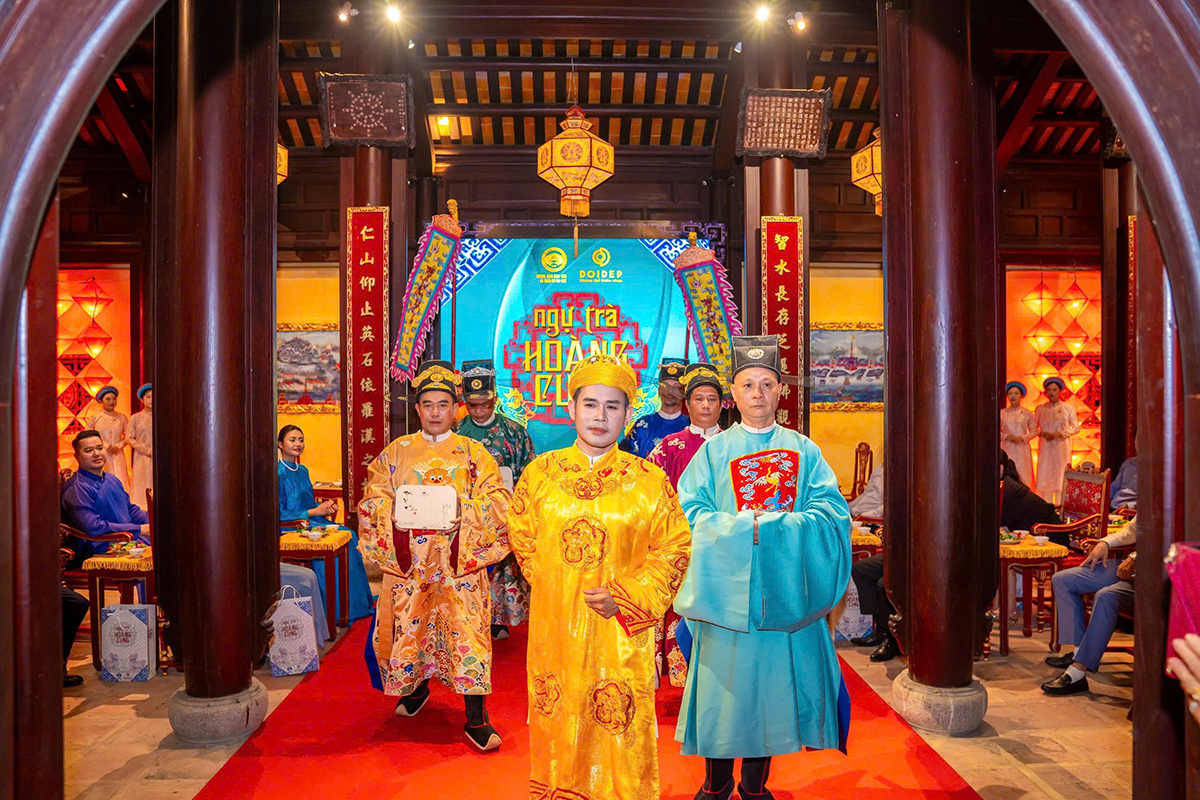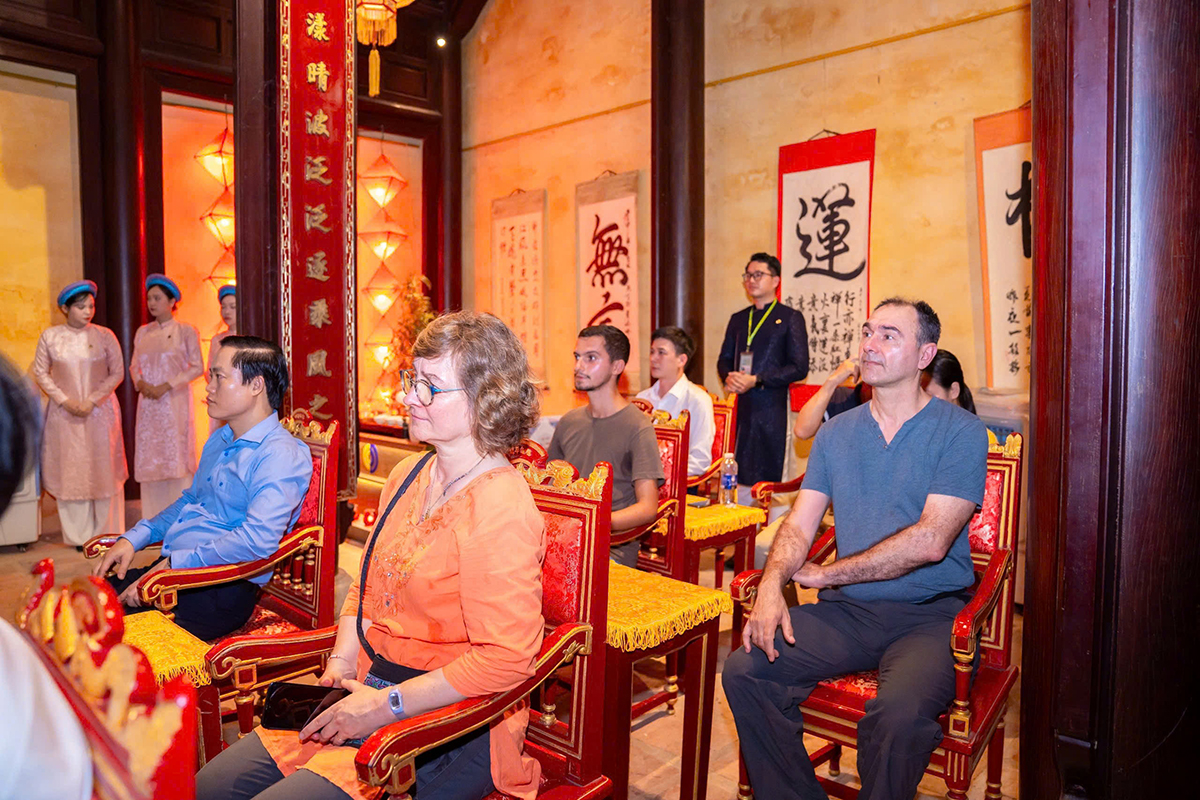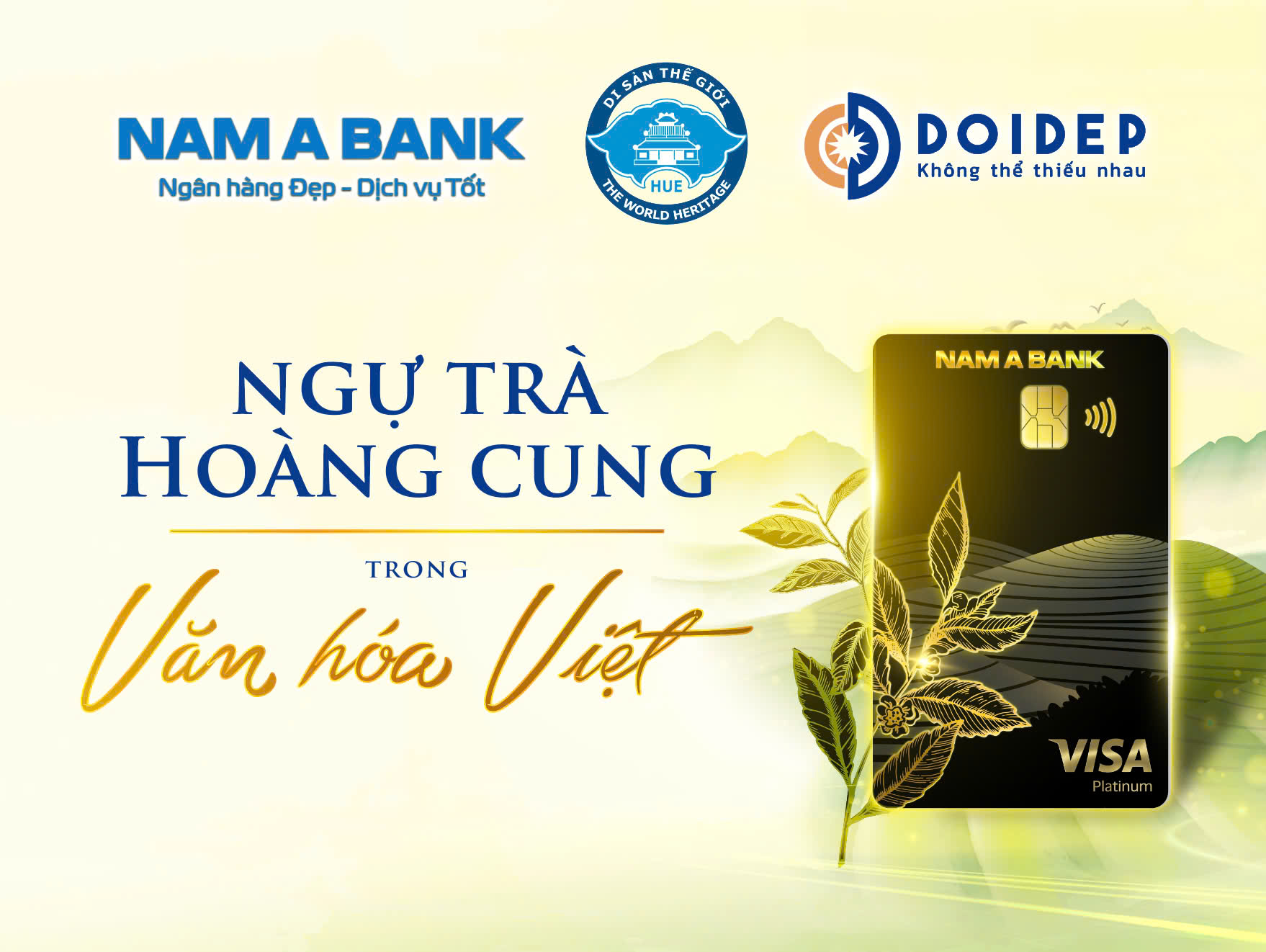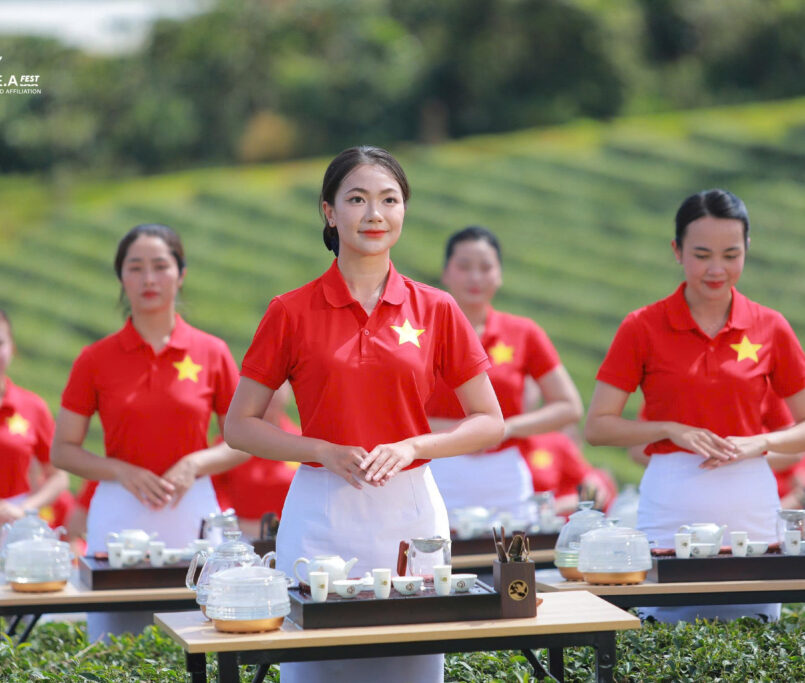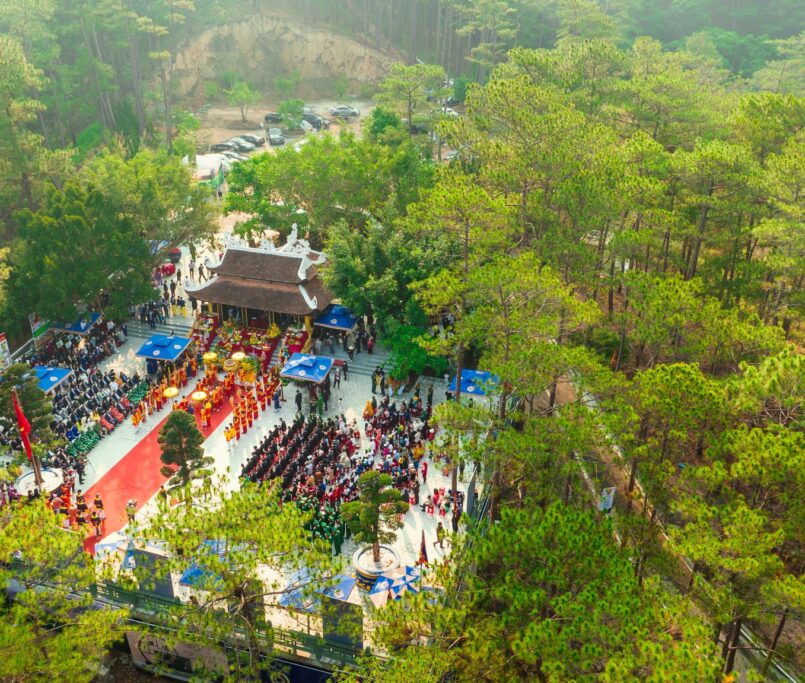In the atmosphere of the 50th Anniversary of National Reunification and the National Tourism Year 2025 with the theme 'Hue - Ancient Capital, New Opportunities' associated with Hue Festival 2025 'Cultural Heritage with Integration and Development', the Hue Monuments Conservation Center in collaboration with the Doi Dep Brand and Nam A Bank restored the ritual, recreating the scene of the king holding a tea party to entertain his courtiers.
The Royal Tea Ceremony is held from 8:00 p.m. on April 25, 26, and 27, 2025 at Di Nhien Duong House, Thieu Phuong Vien, Imperial City, Hue City.
The king held a royal tea party.
The Royal Tea Ceremony was held at Di Nhien Duong (Di Nhien: Natural nourishment). Di Nhien Duong House, along with Cam Xuan Duong, Ham Xuan Hien, Vinh Phuong Hien, are the structures located on four sides of the unique architectural model "Van Tu Hoi Lang", which means there is a "Van" shaped corridor in the middle of Thieu Phuong Garden. Thieu Phuong Garden is one of the typical Royal Gardens of the Nguyen Dynasty. The garden was built in 1828, under the reign of King Minh Mang and is located in the East inside the Forbidden City.
Restoring space, recreating the form of Royal Tea House
From cultural and historical artifacts, the tea-drinking space displays pairs of parallel sentences written by King Thieu Tri from his poems in the form of parallel sentences in the ancient palace. At the same time, bone-inlaid poems such as the poem Mountains and Rivers in the Rain - a unique wordplay poem by King Thieu Tri, 56 words can be read in 64 poems, poem Romantic song – a rambling song – a philosophical poem about the life of King Tu Duc, a poem in Nom script Happy rain - The poem expresses King Tu Duc's joy when praying for rain, the joy of farming; The poem New writing style -King Thanh Thai's first writing of the year was about the favorable weather in Than Kinh and the hope for a bountiful harvest.
"The Four Pillars of Heaven" perform at the King's birthday celebration
In the scene where the king holds a tea party to entertain his courtiers and guests, while drinking tea, the king and his officials recite poems, and together compose a seven-word eight-line poem about tea drinking in times of peace. The king orders the musicians and singers to recite the poem that the king and his officials have just composed. In high spirits, the king invites his officials and guests to enjoy the elegant music pieces that the musicians have just compiled (small music of the Phu Luc Dich; royal dance of the Trinh Tuong Tap Khanh; Hue singing of the Royal Palace's fragrant tea).
The king served royal tea to his ministers.
Finally, the king served tea to the officials and presented tea to the guests and declared the tea ceremony over (after which the attendees continued to chat and stroll in the Thieu Phuong garden).
Five Vietnamese Tea Recipes - Theoretical foundation for Vietnamese Tea Recipes affirms that tea is the "National drink of Vietnam"
Vietnamese tea culture has existed since ancient times, closely linked to the history of the nation. It represents five typical forms of tea drinking of the Vietnamese people, symbolizing the five qualities of truth - goodness - beauty - wisdom - refinement. The diversity in the way of drinking tea shows the richness and depth of Vietnamese tea culture. It is the encapsulation of the national identity of the multi-consciousness and deep awareness in the interpersonal relationships of the Vietnamese people.
Foreign tourists enjoy Royal Tea
The diversity of Vietnamese tea drinking styles is shown through “Five Vietnamese Tea Styles”. Accordingly, Moc style is a popular tea drinking style of Vietnamese people when they do not place too much emphasis on the sophistication of tea drinking. Moc style takes simplicity as its foundation.
Van thuc is a sophisticated way of enjoying tea. This style requires the tea drinker to have a certain understanding of tea, from the way of drinking to the type of tea, tea utensils... Van thuc emphasizes the beauty and sophistication of Vietnamese tea. Ngu thuc is the way of enjoying tea in the royal court reserved for kings and royalty in the past. Ngu thuc is the quintessence of Vietnamese tea.
Next is Tinh Thuc, a way of enjoying tea that aims at tranquility and contemplation. Tinh Thuc aims at building a calm mind, nurturing the good nature of Vietnamese people. Finally, Thu Thuc - enjoying tea combined with reading books and appreciating art to enrich the intelligence and soul of Vietnamese people. Thu Thuc symbolizes the intelligence of Vietnamese people.
In recent years, Nam A Bank has always strived to pioneer and accompany domestic and international cultural programs and activities, aiming to spread and promote traditional national values. Recently, the Bank launched Nam A Bank Visa Platinum card inspired by tea culture - the quintessence of Vietnamese culture. The combination of tea culture on a modern financial product - service, not only shows humility, sincerity, spreads cultural beauty but also shows the strength, efforts to rise, affirms the brand of Nam A Bank in the market. With that meaning, Nam A Bank Visa Platinum card was awarded the Inspirational First Product Launch Award by Visa Organization - Inspirational Award for the first product launch.
Along with the ups and downs of the Vietnamese Tea industry, Nam A Bank has contributed to raising the value of Vietnamese Tea and promoting the economy and international diplomacy. Along with the flow of national culture full of identity, Vietnamese tea culture is not only honored but also becomes a symbol of peace, stability, cooperation and development. Through that, Vietnam entrusts the nation's eternal dream of a peaceful world, where cultural identity is spread and accepted in friendship, preserving cultural and historical values, educating the young generation to be proud and aspire for Vietnam in the new era.
